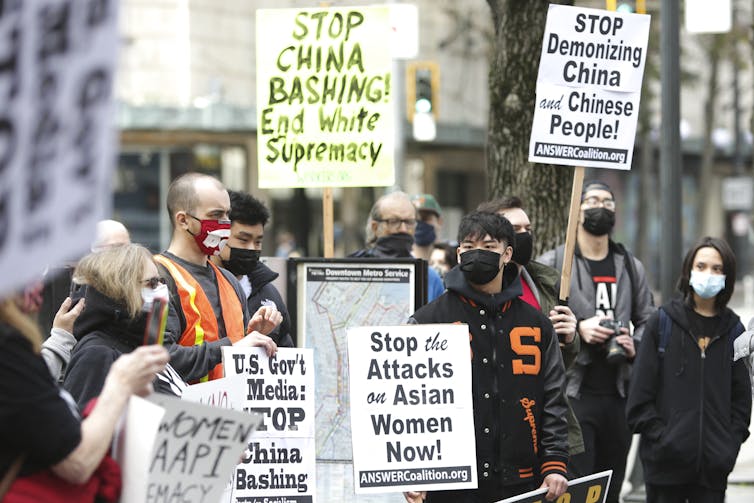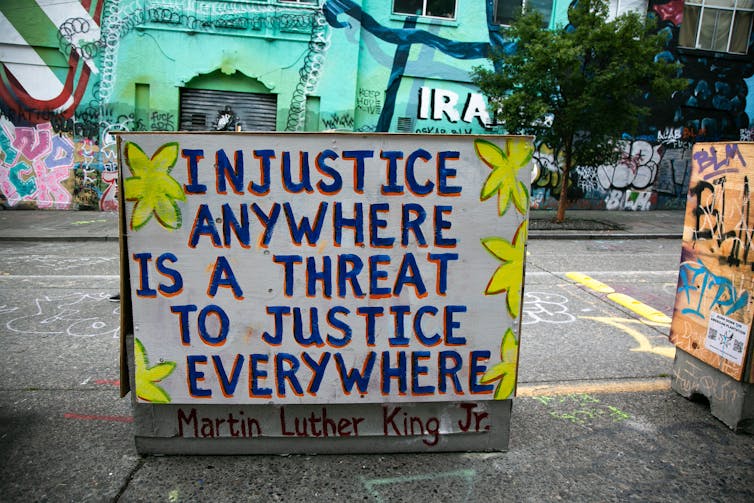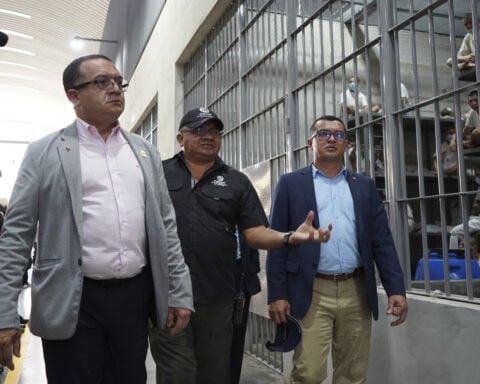The right-wing political campaign against diversity, equity and inclusion policies taking place in several states across the U.S. has called into question the nation’s commitment to achieving racial equality.
In this landscape, Seattle is marking a milestone of sorts – the first anniversary of adopting its Race and Social Justice Initiative ordinance.
This ordinance, signed into law in April 2023, places the Race and Social Justice Initiative under the Seattle Office of Civil Rights and states that all departments in city government are responsible for “implementing change toward ending institutional racism,” which is defined in Seattle as “policies, practices, procedures, and culture of an institution or system that work better for white people and cause harm to people of color, often inadvertently or unintentionally.”
This ordinance highlights race and racism because of the pervasive inequities experienced by people of color in Seattle.
In 2021, for instance, according to an analysis by the nonprofit Prosperity Now, the median household income in Seattle for white people was $96,333. This was as much as 1.5 times higher than the median incomes of Asian households at $77,470 and Latino households at $64,240. The white household income was as much as three times higher than that of Black households at $39,936 and Native American households at $31,519.
Other cities have adopted equity-focused policies for specific programs related to housing access or police conduct, for example. Seattle stands out for passing a citywide ordinance to address institutional racism.
Based on our current and recent research as scholars of urban policy, Seattle’s race and social justice law offers critical lessons for other cities looking to create more equitable places. It’s our belief that more commitments like Seattle’s are needed if the U.S. is to make substantive progress on racial equity.
Developing the Race and Social Justice Initiative
Seattle’s persistent racial wealth and income gap – and its impact on housing, health, education outcomes and other significant social components of daily life – was part of the reason that Seattle officials launched the Race and Social Justice Initiative 20 years ago.
Then-Seattle Mayor Greg Nickels called for the development of the initiative after learning more about how race impacted people’s experiences in Seattle.
A report from the Civil Rights and Labor History Consortium at the University of Washington shows a lingering disparity in the homeownership rates between white households and people of color in King County, where Seattle is located.
U.S. Census data indicates that in 1980, 41% of Black households owned a home. This number fell to 37% in 2000. In contrast, 64% of white households owned a home in 1980, and this rate held steady at 65% in 2000. The racial differences in homeownership are now even more stark.
A critical part of the Race and Social Justice Initiative has been creating professional development trainings to ensure common understandings of how racism affects city government. For instance, employees explore how the location of city meetings can send signals about the expected audience and then discuss the importance of having city materials available in multiple languages. Ongoing trainings help employees apply racial equity to their workplace practices and the programs that the government operates.
The trainings have led to not only changes in city policies to include more equitable planning practices, but also an increase in the contracts awarded to women and minority-owned businesses.

A demonstration against anti-Asian violence in Seattle on March 27, 2021.
Seattle’s racial justice commitment
Another way racial justice efforts are integrated throughout Seattle’s city government is with step-by-step guides that show how to put racial equity into practice. For example, a two-question budget filter, launched in 2008, required employees to assess whether each line item in a budget reduced race-based disparities. This helped align city priorities and values with actual resource allocation.
Over time, city officials developed the Racial Equity Toolkit. This toolkit describes each step to be taken to evaluate whether or not a policy, initiative, program or budget item alleviates or furthers racial inequities. The toolkit is regularly updated and used throughout city government to make decisions about everything from school lunches to maintenance repairs for city-owned vehicles.
Not every one in Seattle has supported the initiative. In April 2023, a former white municipal government employee sued the city because of alleged racial harassment.
Other community members have voiced frustration with the differences between the daily discrimination experienced by people of color and the stated commitment from city officials for racial justice.
Lessons for other cities
In our view, Seattle officials have built capacity for social transformation throughout a city government. This has been possible through a 20-year commitment to create a culture that makes achieving equity integral to city government. Working to end institutional racism is part of every employee’s job and the functioning of municipal government.
It is too soon to evaluate the effect of the ordinance. At the same time, we see the support for adopting the law as proof that city employees think that formalizing the Race and Social Justice Initiative in law is worthwhile.
Seattle’s experience shows that adopting a racial equity law requires an enduring and long-term commitment. Nevertheless, we believe that other places can do such work too.
Here’s how.
First, if people don’t fully understand the scope of an issue – such as institutional racism and how it relates to their professional work – they are less likely to change how they do their jobs. What Seattle officials have learned is that robust professional development trainings for employees create common understandings and shared knowledge.

Demonstrators in Seattle painted on structures and used graffiti to express their support for social justice reform policies.
Second, developing a clear process to enact change makes it easier to have widespread application. A racial equity toolkit means that equity is not an afterthought. Instead, it is a central part of how all decisions are made in city government.
Third, institutional change takes time and involves more than legal compliance. It is important to start small and see what works in the local context. Building a foundation for creating further change keeps efforts moving forward.
In our view, without the social infrastructure in place, passing a law for racial justice is neither as likely nor as successful. Indeed, a strong institutional commitment shown over time helps give racial justice laws legitimacy.
Finally, and arguably most important, we recognize the uniqueness of different cities and towns and caution against the impulse to wholesale copy Seattle’s efforts. City governments are better served by first assessing the local context of racial and social justice, and then adapting what worked in Seattle to advance racial equity in each place.
Everyone benefits from more equitable approaches to urban governance. Crafting and sustaining municipal programs that focus on racial equity is possible for cities seeking a more just future.

Serin Houston received funding from the National Science Foundation for a Graduate Research Fellowship from 2006 to 2009 and conducted research in Seattle during this time. This research included interviewing government employees and community members, gathering data in the municipal archives, and conducting participant observation. This article draws upon these data. Houston and Trudeau maintain a commitment to the highest ethical and academic standards.
Dan Trudeau does not work for, consult, own shares in or receive funding from any company or organization that would benefit from this article, and has disclosed no relevant affiliations beyond their academic appointment.
Source: The Conversation

 Trump has begun another trade war. Here's a timeline of how we got here
Trump has begun another trade war. Here's a timeline of how we got here
 Canada's leader laments lost friendship with US in town that sheltered stranded Americans after 9/11
Canada's leader laments lost friendship with US in town that sheltered stranded Americans after 9/11
 Chinese EV giant BYD's fourth-quarter profit leaps 73%
Chinese EV giant BYD's fourth-quarter profit leaps 73%
 You're an American in another land? Prepare to talk about the why and how of Trump 2.0
You're an American in another land? Prepare to talk about the why and how of Trump 2.0
 Chalk talk: Star power, top teams and No. 5 seeds headline the women's March Madness Sweet 16
Chalk talk: Star power, top teams and No. 5 seeds headline the women's March Madness Sweet 16
 Purdue returns to Sweet 16 with 76-62 win over McNeese in March Madness
Purdue returns to Sweet 16 with 76-62 win over McNeese in March Madness








